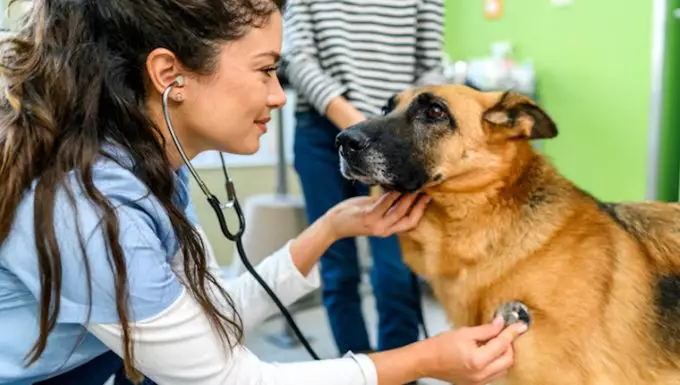Liver and gallbladder cancer in dogs is an alarming diagnosis that can shatter the lives of pet owners, often coming with a flood of uncertainty. Unlike other cancers that may have recognizable symptoms or warning signs, liver cancer often develops stealthily, leaving owners scrambling for answers. While the exact origins remain elusive, certain breeds suffer disproportionately, including Golden Retrievers, German Shepherds, and Labrador Retrievers. A detected trend indicates an urgent need for awareness among owners of these breeds.
This condition encompasses six different types of tumors, each with its own classification—benign, malignant, focal, diffuse, primary, and secondary—which complicates the landscape of diagnosis and treatment. The lack of a singular cause makes prevention nearly impossible, amplifying the stress experienced by those affected.
Identifying Symptoms and Seeking Help
The wide-ranging symptoms of liver and gallbladder cancer can easily be mistaken for less severe health issues. Dogs may exhibit alarming signs, including diarrhea, vomiting, lethargy, and notable weight loss. These symptoms often culminate in severe consequences like jaundice or collapse, where the body’s systems are overwhelmed, making swift veterinary intervention critical.
When pet owners notice these signs, their immediate instinct may be denial or anguish, but proactive engagement with a veterinarian can provide the clarity needed. Your veterinarian will meticulously evaluate your dog by taking a complete medical history that encompasses considerations unique to their breed. Additionally, physical examinations can yield significant information, as the veterinarian assesses the abdomen for possible tumors. Blood and urine testing, along with imaging procedures like X-rays and ultrasounds, can provide essential data for an accurate diagnosis.
The Diagnostic Journey
The diagnostic process for liver and gallbladder cancer is intricate. It encompasses a series of tests aimed at uncovering the precise type of tumor and its stage. The multifaceted approach not only includes routine tests but also specialized assessments of blood clotting and bile acid levels. These indicators can be pivotal in understanding the severity of the tumor and the overall function of the liver.
Once identified, the specific type of tumor guides the treatment approach. Knowledge about whether the tumor is benign or malignant—and its focal or diffuse nature—critically influences outcomes. Discussion with the veterinarian should encompass all treatment options available and their potential outcomes. Surgery often takes precedence, whereby either part of the liver or the entire gallbladder may be excised. However, surgical intervention carries risks, and not all dogs may be candidates due to overall health or the extent of the cancer.
Exploring Treatment Protocols
Treatment protocols are tailored to the individual dog, taking into account age, breed specifics, and the nature of the tumor. Chemotherapy may come into play, although it’s not universally effective for canine liver cancer. Some medications are designed to bolster liver function, making life more tolerable for dogs as they undergo treatment. Pet owners must remain vigilant about following dosing regimens and monitoring their dog’s reaction to medications, as inconsistencies can hinder recovery.
At home, the recovery environment plays a vital role. Providing tranquility and assurance during this challenging phase can help create a healing atmosphere for the dog. Regular veterinary visits for check-ups and blood tests are indispensable, ensuring that you stay informed about your dog’s health status and prompt adjustments to the treatment plan as needed.
The Emotional Toll on Owners
Caring for a dog battling cancer can take a significant emotional toll on pet owners. The feelings of helplessness in the face of such a fierce illness can be overwhelming, often leading to isolation or feeling disconnected from others. Understanding that support is available—through community groups, online forums, or veterinary emotional support services—can mitigate feelings of solitude. Sharing experiences with fellow dog owners can provide both comfort and hope.
Empowering oneself through knowledge about this condition is crucial for making informed decisions that can lead to improved quality of life for their beloved pets. By actively engaging in their dog’s health and treatment, owners can transform their fears into actionable steps, fostering an environment of care and compassion.

